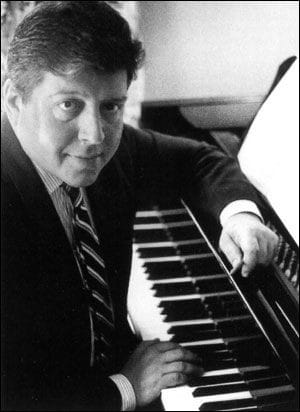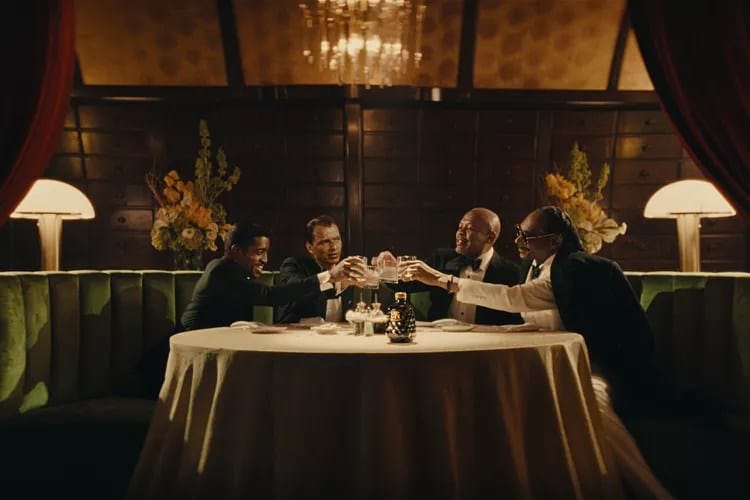
YOU WILL BE MY MUSIC
Sinatra sings Joe Raposo (1)
By Manuel Muñoz.
Frank Sinatra began the 1970s mired in the momentous dilemma of whether or not to continue his career. Despite being still young – 54 years old – he felt like “the man in the mirror” in his song (“The Man in The Looking Glass“, 1965); he could hear the relentless ticking of the clock, reminding her of his humanity. The nights out were more difficult to endure the next day, the sexual vigor was not as overwhelming as it used to be, his voice failed more times than desired and he felt the desire to fight in a cultural panorama in which there seemed to be no place. for him. When the headlines mentioned his name, they did so to report on the well-known mafia affair, his ideological transition towards conservatism and the altercations he continued to cause in Las Vegas, understandable for a young rock star but unheard of for a mature performer of popular song.
Although in concerts he continued to make an impressive display of class and unparalleled magnetism, with the work in the studio, the one intended to preserve his legacy for future generations, he did not conveniently channel the flow of emotions that he kept within him. His most recent and risky recording works, “A Man Alone” (1969) and “Watertown” (1970) had not been understood, because they presented sonorous and interpretive nuances unknown among his traditional audience and difficult to decipher for the youth audience.
FRANK SINATRA RADIO
The first recording sessions of 1970, held in October and November, reveal a Sinatra who tries, with certain erratics, to renew his sound based on melodies by young composers: a jubilant and frugal tone in pop forays with an undisguised commercial objective ( “Sunrise In The Morning,” “Leaving On A Jet Plane,” “Close To You,” “Life’s A Trippy Thing,” “Feelin’ Kinda Sunday“); Sinatra’s triumphant tone of “My Way” (“I Will Drink The Wine“, “I’m Not Afraid“) and the most interesting, at least for me, the soft and sad ballads with a folk and naive approach (“The Game Is Over“, “My Sweet Lady” and “Bein’ Green“), a kind of update of the softer and more candid Sinatra of the 1940s.
That calm, taciturn and philosophical Sinatra, on the eve of a second process of artistic transition, found unexpected but accurate means of expression in the works of John Denver, Kris Kristofferson and Joe Raposo, a composer who especially caught the attention of the Voice and brought him to record, between 1970 and 1982, no less than seven of his songs, which in my opinion, offer a precise portrait of Sinatra without a tuxedo or nicknames, the Francis Albert full of questions of that time. Who was Joe Raposo and what was it about his artistry that meshes with Frank’s sensibility?
YOU WILL BE MY MUSIC (1)
Joe Raposo has gone down in history for his work on the children’s series “Sesame Street,” for which he wrote the theme song. He also composed music for television series such as “Three’s Company” and “The Ropers.”
He was born in 1937 in Fall River, Massachusetts, into a family of Portuguese immigrants. Joseph, his father, was an accomplished musician and served as his first teacher.
He graduated in 1958 from Harvard University and later from L’Ecole Normale de Musique in Paris, where he studied with the legendary Nadia Boulanger, mentor to musicians such as George Gershwin, Daniel Barenboim, Quincy Jones, Burt Bacharach and Leonard Bernstein.
In the mid-1960s, Raposo played in Boston piano bars to make ends meet. Upon hearing Raposo’s musical ability, radio host Jonathan Schwartz urged him to leave the piano bars and seek a better scene in New York City. Raposo’s decision to accept Schwartz’s suggestion and move in 1965 eventually led him to meet Jim Henson, creator of “The Muppets” and “Sesame Street” and, consequently, to international fame.
Raposo wrote songs for “Sesame Street” from its beginnings in 1969 until the mid-1970s, and also part of the 1980s. The version of “Sing” – a classic from the show – recorded by the group The Carpenters in 1973 It peaked at No. 3 on the Billboard singles chart.
Frank found in Raposo’s work a perfect vehicle to transmit to the public a concern, common to any person of his age regardless of race, creed or social class: disidentification with the changing environment and the anxieties that it entails; Raposo and Sinatra offer a darker vision of old age and the passage of time than the one captured by the singer in “September Of My Years” (1965); pride is replaced by resignation, longing gives way to mourning for what is irreparably lost, and the quiet delight of simple pleasures is clouded by the awareness of death.
I want to share with you the review, in six articles, of a brief but very revealing songbook within the great repertoire of the Voice.
FRANK SINATRA RADIO
Bein’ Green (1970)
Arrangements: Don Costa
LP: “Sinatra & Company” (1971)
This song became very popular in 1970 in the interpretation of Kermit the Frog, whose voice belonged to Jim Henson. In the song, the frog begins by lamenting his green coloring, expressing that green “mixes with so many ordinary things” and wishing he were a different color. But at the end of the song, he remembers positive associations with the color green and concludes by accepting and embracing the greenness of it.
Decontextualized from the character, the piece becomes a beautiful anthem of self-acceptance.
It is not possible to think that Frank chose to record it out of whim, laziness or commercial aspirations, but rather driven by identification with the message. Will Friedwald notes in his book “The Song Is You” that “Sinatra internalizes the phrase “it’s not easy being green” as “it’s not easy being me,” recognizing that the message has nothing to do with skin.” The reading that Sinatra gives to this song is minimalist and tender, with a shocking honesty that goes unnoticed by the listener who does not know the artist’s life in depth.
As so many other times, Sinatra paved the way by walking, and after his version came those of Lena Horne (1971), Buddy Rich (1972), Van Morrison, Stan Kenton (both in 1973) and Ray Charles (1975).
If you want to visit more articles about the life of Frank Sinatra enter the following Sinatra Radio 24h link: https://sinatraradio24h.com/category/articles/
We remind you that you can also listen to Sinatra Radio 24 hours on your mobile phone by downloading our free applications for Android in the Play Store https://play.google.com/store/apps/details?id=sinatra.radio24h








